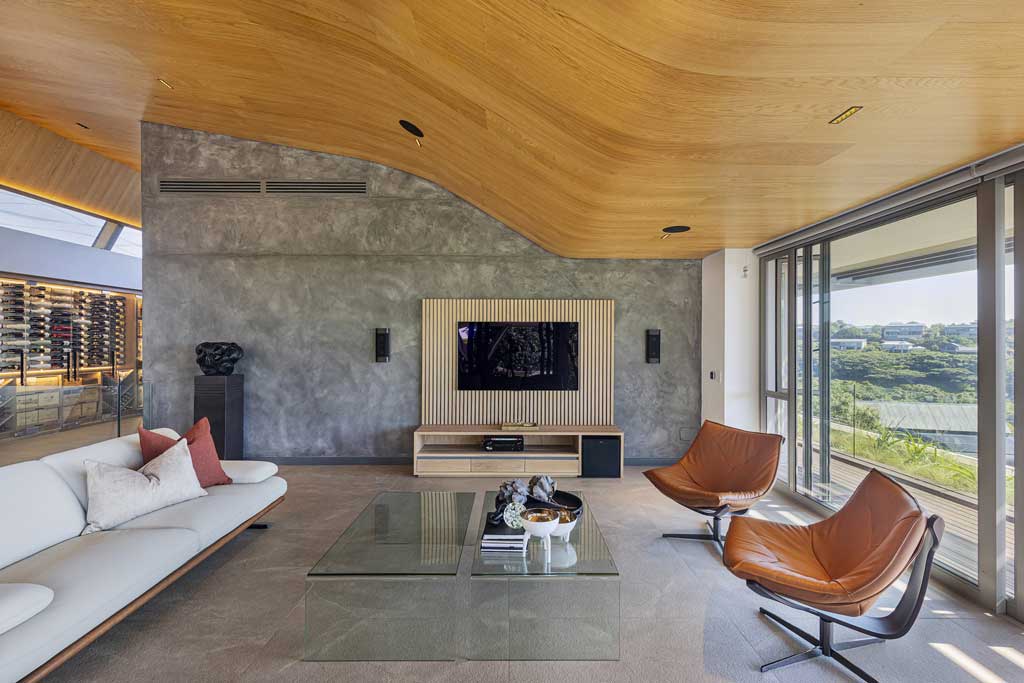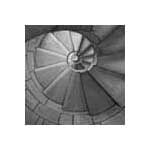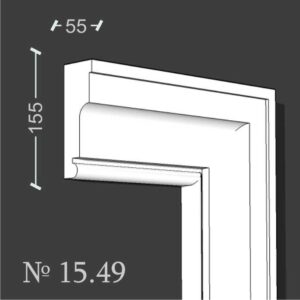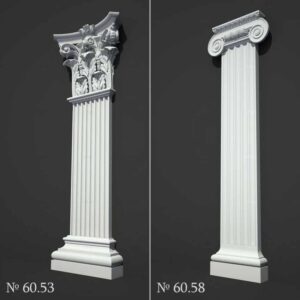The interplay between materials and environment shapes the essence of coastal architecture, where the robustness of concrete meets the organic warmth of timber. This synergy not only defines the physical structure but also the emotional resonance of spaces designed for life by the water’s edge. The narrative of such a home is a testament to design that embraces the elements, where each material is chosen for its ability to withstand and harmonize with the maritime climate while offering a sanctuary of warmth and tranquility.






| Architects | https://www.metropolearchitects.com/ |
| Images | http://www.grantpitcher.ca/ Mo Heine |
Concrete Elegance
Concrete stands as the backbone of modern coastal architecture, chosen for its durability and minimalist beauty. It forms the walls that shield against the elements, its surface reflecting the subtle changes in light from dawn till dusk. This material, often perceived as cold and impersonal, is reimagined in these homes as a canvas of elegance, its texture and color blending seamlessly with the natural landscape.
The versatility of concrete also allows for innovative design solutions. Its strength enables the creation of expansive, open spaces that capture the panoramic vistas of the coast. These are areas where the boundaries between indoors and out are effortlessly blurred, inviting the serene beauty of the surroundings into every corner of the home.
In the hands of skilled architects, concrete becomes a medium of warmth through its interaction with light and shadow. As the sun arcs across the sky, the interplay of light within the home changes, bringing to life the subtle textures of the concrete, creating an ever-evolving aesthetic that is both dynamic and soothing.
Sustainability is another facet of concrete’s elegance in coastal living. Advances in construction techniques have led to more environmentally friendly forms of concrete, reducing the carbon footprint of new builds. Moreover, its thermal mass properties enhance energy efficiency, keeping homes naturally cooler in the summer and warmer in the winter, thereby reducing reliance on artificial heating and cooling.




Timber Warmth
Timber introduces a natural counterpoint to concrete’s solidity, bringing warmth and organic beauty into the coastal home. Its inclusion speaks to a desire for connectivity with nature, its grain and texture a direct link to the forests and trees that once stood. In living spaces, timber frames views, crafts furniture, and lines floors, each surface a reminder of the outside world.
The use of timber also brings a tactile quality to interiors, inviting touch and interaction. Where concrete provides the stage, timber adds the warmth of the hearth, creating spaces that are not only visually appealing but also comforting and inviting. It’s a material that ages with grace, acquiring character over time and telling the story of the home and those who live within its walls.
Beyond aesthetics, timber plays a crucial role in the ecological aspect of coastal living. Sourced responsibly, it represents a renewable resource that captures carbon dioxide, contributing to the home’s overall sustainability. Innovations in timber construction methods, such as cross-laminated timber, have expanded its applications, offering strength comparable to traditional building materials but with a fraction of the environmental impact.
The acoustics of timber further enhance the living experience, its softness absorbing sound and creating a quiet, peaceful environment. This quality is invaluable in coastal settings, where the rush of the wind and the crash of waves are constant companions. Timber mitigates these sounds, preserving the tranquility of indoor spaces.






Harmony with Nature
The marriage of concrete and timber in coastal architecture is more than a stylistic choice; it’s a statement of living in harmony with the environment. These materials, each with their unique properties, come together to create homes that are resilient yet open, modern yet timeless. They embody a philosophy of building that respects the landscape, minimizes environmental impact, and provides a haven for its inhabitants.
Landscaping plays a crucial role in this harmony, with gardens and outdoor spaces designed to merge with the natural coastal flora. Native plants are chosen for their ability to thrive in the local climate, requiring less water and maintenance, further reducing the ecological footprint of the home.
Water management is another aspect where this harmony is evident. Coastal homes, built with an understanding of their environment, incorporate features such as rainwater harvesting and permeable surfaces to mitigate the impact of heavy rains and support the natural water cycle.

In the realm of coastal living, the union of concrete elegance and timber warmth creates spaces that are not just dwellings but sanctuaries. These homes stand as beacons of sustainable and thoughtful design, where every choice, from material to layout, is made with an eye towards harmony with the natural world. They offer a blueprint for future constructions, a path towards living that values both innovation and tradition, resilience, and comfort.












